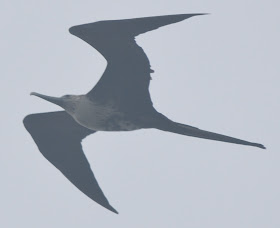Now that spring migration is trickling out, it's a good time to review it in its entirety. At the beginning of migration, I was ready to say that it was the single worst spring migration I've ever seen, even coming on the heels of several other unspectacular springs. Much of the time south wind meant that even if migration was happening, it was invisible to us as it passed thousands of feet over our head as birds winged past on favorable winds. That type of bad migration I can deal with, because it helps birds. However, who's to say whether there really are birds going overhead, or if what's invisible to us is really even there?
There were several times when conditions seemed perfect for migration, and yet there were no birds on the ground. It wasn't until the day of April 23 that migration went from "worst ever" status to pretty good. On that morning, a stiff north wind was blowing, and when I arrived at Rutherford Beach before sunrise, I could already see a few songbirds coming in off the Gulf a few feet over the water, then dropping into the first brush available. When Lane and Lima and Remsen showed up a short while later, we saw more of the same, and found the usually birdless short salt cedars near the beach crowded with migrants, including a nice group of warblers. Later in the day, we'd find amazing numbers of migrants everywhere we stopped, but surprisingly, warblers were mostly absent from the mix everywhere except for that small patch of cedars. The amazing numbers (numbers here only from Peveto Woods) were of vireos (60 Red-eyed), tanagers (70 Summer, 30 Scarlet), grosbeaks (60 Rose-breasted), and orioles (40 Orchard, 50 Baltimore).


Following that event, migration and spring birding seemed about normal, at least in recent terms.
 |
| Lesser Nighthawk |
 |
| Scarlet Tanager |
 |
| odd Great-tailed Grackle |
 |
| Philadelpha Vireo |
 |
| Banded Royal Tern |



















No comments:
Post a Comment